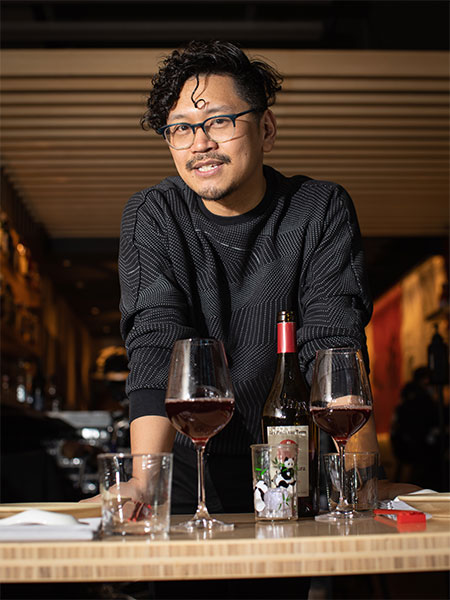

Having grown up in the Philippines, I miss some of the local treats I enjoyed as a child: chewy rice cakes piled high with coconut jam. Purple-yam ice cream made with water-buffalo milk. Shaved ice with sweet corn. One thing that has always stuck in my mind and palate is a delicious candy treat called sampalok: tamarind fruit pulp rolled in salt and sugar, wrapped in a bright cellophane wrapper. Today, the crinkle of cellophane still evokes a Pavlovian response of salivating. Sampalok is at once sour and sweet, the crunch of the sugar mixing with the cut of the salt and the brightness of that tamarind fruit sending me straight to balmy, after-school days in Manila.
It is with this distinct nostalgia I remember sitting in a wine class as we went through the wines of the Loire Valley, and I lifted a glass of cabernet franc to my nose. As our instructor waxed poetic about her most recent trip to Anjou, I was shot back to the bench where I ate these tamarind candies, my fingers getting sticky. As I continued sipping this sample that felt like a direct connection to a place I knew but had never been, my instructor continued to reminisce about visiting during a particularly humid time and being ravaged by mosquitoes. The Loire sounded closer to the Philippines than I had expected, and the mosquitoes, just the same.
I looked at the tasting grid, eager to share my experience, but could not find anything close to what I was tasting. I knew that tamarinds were brown, but the grid said nothing about fruit that color. It said orchard fruit, but despite tamarinds growing on trees, these did not look like the trees in the textbooks. I debated whether I should raise my hand, but everyone else in the room was discussing shades and treatments of cherries with nuance, and I couldn’t meaningfully contribute since my only experience with cherries had been buying them in a bag from a supermarket. Instead, I waited after class to talk to my instructor just to confirm that I wasn’t going crazy, that I was tasting tamarind whenever I tasted cabernet franc. She looked at me quizzically. “I wish I could tell you what tamarind tastes like,” she said.
“It tastes like cabernet franc,” I thought in my head. “Ah,” I said, “never mind, then.”
“I looked at the tasting grid, eager to share my experience, but could not find anything close to what I was tasting.”
“Lonely” isn’t the word, nor is it “isolated,” but whatever that feeling was of being the “only,” it washed over me as powerfully as my craving for more cabernet franc earlier in the class.
And it would happen again and again: to smell the perfume of jackfruit when we explored Savennières and chenin blanc; to gauge texture like rice porridge—instead of dairy—when I thought about body and weight and mouthfeel; to see how many different kinds of apples people would list on their tasting grids but reduce the wonderful world of mangoes and pineapples and passion fruit to the vague ‘tropical-fruit’ qualifier. I was trying to make my own experience fit in a box that barely acknowledged it. The inherent joy I had come to associate with wine began to dissipate in the prescriptive space of the wine classroom, which began to look less like a place of knowledge and more like a place of denial.
The best thing about wine, though, is the aspect of community it invites. In our tasting group, we were a ragtag crew of “onlys” from all over the place, relating to wine through our own very specific palates, disregarding the orthodoxy of the grid and prioritizing our own lived happinesses in wine. In our effort to further understand what we were studying in class, we wanted to bring cabernet franc to our space and how we related to it.
The beginning of this piece reads similarly to what I recounted to my group that evening, until our tasting took a delightful left turn when a friend from Trinidad perked up after hearing about tamarind candies. They had their own version, she said, and she would snack on them gleefully as a child; in her class, she, too, caught a whiff of cabernet franc that sent her on her own nostalgic journey. Glasses full, we raised a toast, our only-ness bonding us across oceans and cultures and tasting grids, the flavor of tamarind on our scraps of paper, etched on our palates. Turns out, the Loire Valley is closer to Trinidad and Manila if we allow it.
Miguel de Leon writes about wine and writes the wine list for Pinch Chinese in NYC.
This story appears in the print issue of June 2021.
Like what you read? Subscribe today.


















